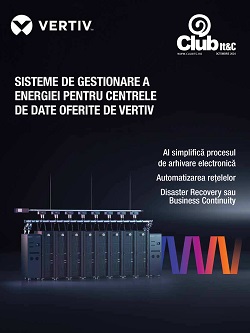The economic uncertainty generated by the COVID-19 pandemic is increasing the pressure on governments to ensure that tax bases are not diminished, especially in the context of the need to allocate resources to vital areas such as the public health sector, social measures, or business support in an effort to limit the adverse economic effects of the pandemic.
Under the circumstances imposed by the pandemic, a wide range of industries and multinational groups have had to react and adapt their activities to the new climate of economic contraction characterized, among other things, by the restriction or cessation of activity, significant decreases in demand and cash flows, operational losses, etc.
 Due to the economic conditions changed by the health crisis, both documentation and compliance with the transfer pricing principle is a priority for tax authorities. Challenges regarding the application of the arm’s length principle during the health crisis have also been addressed by the Organisation for Economic Co-operation and Development (OECD), which published a Guidance at the end of 2020, that includes recommendations on the transfer pricing implications of COVID-19.
Due to the economic conditions changed by the health crisis, both documentation and compliance with the transfer pricing principle is a priority for tax authorities. Challenges regarding the application of the arm’s length principle during the health crisis have also been addressed by the Organisation for Economic Co-operation and Development (OECD), which published a Guidance at the end of 2020, that includes recommendations on the transfer pricing implications of COVID-19.
Many multinational groups operate on the Romanian market through entities characterized by limited functions and risks (“limited risk”), that conduct transactions exclusively within the group, based on specific instructions, and do not maintain business relationships with third-party end customers.
In Romania, such entities with limited functions and risks carry out contract manufacturing activities or provide toll processing services in the textile, footwear, or electronic components and systems sectors.
How will 2020 impact the transfer pricing analysis of limited risk manufacturers in Romania?
The preparation of benchmarking studies to document the main business activities of textile, footwear, or electronic components manufacturing in 2020 raises practical difficulties, especially in the application of the transactional net margin method, as the financial information for 2020 will be available in the second half of 2021 at the earliest.
In the context of the COVID-19 pandemic, the set of measures adopted by the authorities have led to imbalances in the supply chain of the Groups and low-capacity operation or cessation of production.
„In order to document transactions with related parties in 2020, Romanian taxpayers engaged in contract manufacturing or toll manufacturing activities in areas such as textile, footwear, or electronic equipment should consider the practical approach proposed by the OECD in the new Guidance. Thus, the starting point in the preparation of the benchmarking analysis for 2020 is the analysis of the extent to which the manufacturing capacity for textiles, footwear, or electronic components has undergone changes in parameters, the assessment of fluctuations in sales volume, during and before the COVID-19 pandemic, the comparison of budgeted results with the financial results achieved, and identifying the variations caused by the effects of the COVID-19 pandemic.”, mentioned Liviu Gheorghiu, Tax Senior Manager, Mazars Romania.
How can Romanian producers register operating losses or exceptional expenses?
Another key aspect from the perspective of documenting transfer pricing in 2020 for manufacturers with limited functions and risks in Romania is the allocation of COVID-19-specific losses and expenses. Financial pressures, production disruptions, and changes in the level of demand experienced by Groups as a result of the pandemic can also affect the financial health of limited risk manufacturers in Romania.
Although the OECD does not provide a concrete framework in which a limited risk manufacturer may incur losses, the new OECD Guidelines recognises the possibility for such a manufacturer with a limited functional profile to incur losses under certain conditions.
„Whereas in the absence of clear rules, the allocation of losses by Groups to affiliated limited risk manufacturers in Romania remains a nuanced issue in documenting transfer prices in 2020, the OECD puts forward the idea that losses can be justified during the health crisis. The OECD recommendation is that the allocation of COVID-19 specific losses and costs to limited risk manufacturers should be based on a detailed functional analysis that includes the clear delineation of the transaction and assessment of the behavior of independent manufacturers in similar circumstances.”, mentioned Adrian Mutea, Tax Assistant Manager, Mazars Romania.
At the level of manufacturers with limited functions and risks in Romania, market risk and operational risk will have a central role in the functional analysis. According to the OECD, for this type of taxpayer, the transfer pricing analysis should also include a comparison of the level of market and operational risk, before and during the COVID-19 pandemic, to document any possible differences.
In the event of a revision of the contractual terms established in intra-group transactions, following the constraints imposed by the health crisis, the OECD recommends the preparation of supporting documentation highlighting compliance with the arm’s length principle and changes in contractual terms at the level of independent parties.
„The bottom line of the OECD’s recommendations on the impact of the COVID-19 pandemic on transfer pricing is flexibility in approach and the reasonable analysis of specific circumstances given the variables imposed by the health crisis. Supporting, during tax inspections, the arm’s length level of the transfer prices for 2020 in the case of limited risk manufacturers in Romania that have had losses will be based on the degree of detail and accuracy of the supporting documentation made available to the inspection teams, in order to demonstrate that an intra-group loss can have an arm’s length character within the industry.”, mentioned Liviu Gheorghiu, Tax Senior Manager, Mazars Romania.
At the same time, a close collaboration with the Group in the preparation of transfer pricing documentation for 2020 will be essential given that the issue of allocation of losses limited risk manufacturers may be viewed from different angles by tax authorities in the jurisdictions where the Group operates, depending on the direction of the investment.
Consequently, the year 2020 may be marked by a high risk of double taxation in the context of divergent interpretations of tax authorities, especially in cases where manufacturers with limited functions and risks in Romania do not document in detail and proactively delineate commercial relations with the Group during the pandemic.






























